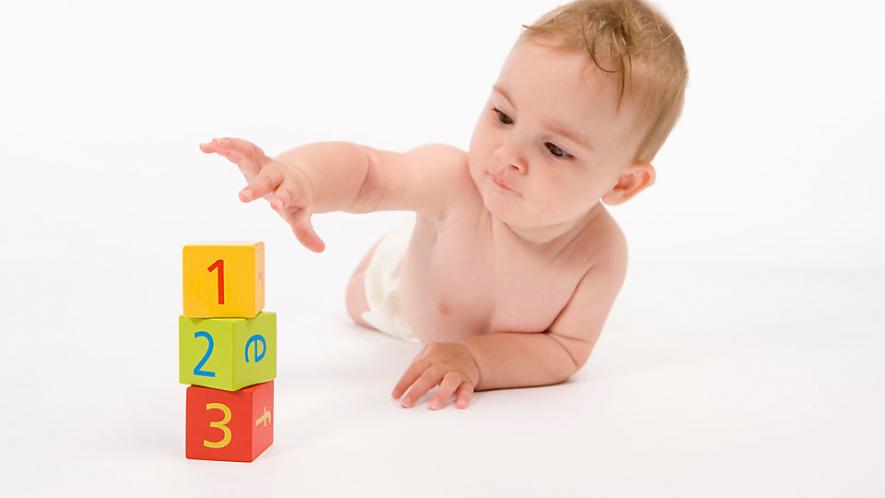Human Babies Have a Sense of Numbers From Birth

Image Courtesy: LeapFrog
Researchers performed an experiment which shows that babies have a sense of numbers right from infancy. The results of the study suggest that newborn babies can form a mental number line.
The babies associated “few” to the left direction, and “many” to the right direction, thus being able to indicate recognition of the fact that numbers increase from left to right. This direction is true of most languages, with an exception of the few that read from right to left, such as Arabic or Hebrew.
80 newborns were recruited for this study, with their ages ranging from 0 to 3 days.
The experiment consisted of a series of audio-visual tests. Repetitions of sound clips of syllables, such as “ba”, “la”, “ta,” were played for the babies. For about half of the babies, six repetitions were played, and for the other half, eighteen repetitions were played. The number of repetitions was used to give babies the idea of “few” or “many.” These sounds were followed by showing the babies an image of a rectangle. The babies who heard fewer syllables were shown a smaller rectangle, and those who heard more were shown a bigger rectangle.
In the next step, the babies who heard 18 syllable repetitions were played 6 syllables, and vice-versa. Then both the groups were shown pictures of two similar sized rectangles, one on the left and the other on the right. It was hypothesised that if the babies who heard 6 syllables looked at the rectangle on the left, and the other way round, they associate a smaller quantity to the left, and a bigger quantity to the right. And the babies did just that.
The research team, led by Maria Dolores de Hevia at Paris Descartes University, performed several variations of this experiment. But the results were the same. It was also seen that the babies who heard six syllables followed by 18 syllables looked at the rectangle on the right for a period twice as long, compared to the other group of babies who fixed their gaze at the rectangle on the left.
The experiment also takes us closer to concluding that humans are born with the bias that numbers increase from left to right, rather than it being something we eventually learn. When teaching languages that read in the opposite direction, this bias is reversed.
Get the latest reports & analysis with people's perspective on Protests, movements & deep analytical videos, discussions of the current affairs in your Telegram app. Subscribe to NewsClick's Telegram channel & get Real-Time updates on stories, as they get published on our website.














